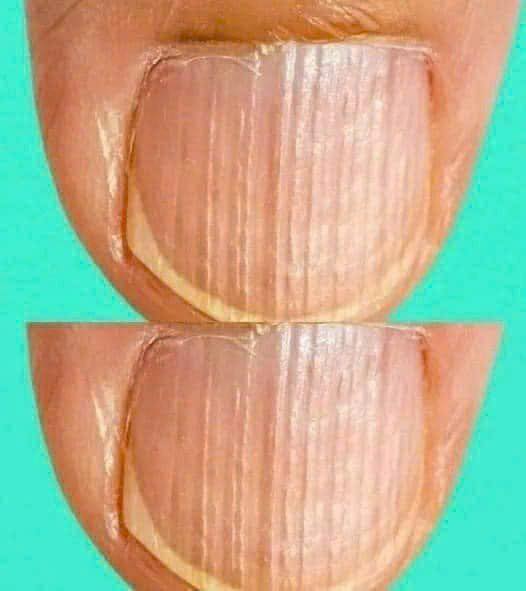ADVERTISEMENT
– **Protein deficiencies** may lead to horizontal ridges or lines across the nail.
A healthy, well-balanced diet rich in fruits, vegetables, whole grains, and protein is essential to maintaining the health of your nails.
#### **3. Dehydration**
One common cause of nail ridges, particularly vertical ones, is dehydration. When your body doesn’t get enough water, your skin and nails can become dry and brittle. As a result, ridges and stripes may develop due to the lack of hydration. Ensuring that you drink plenty of water throughout the day can help prevent this condition.
#### **4. Stress**
Chronic stress can also affect the health of your nails. Stress, both physical and emotional, can disrupt the normal growth cycle of your nails, leading to temporary transverse ridges (Beau’s lines). These lines are often a sign that your body went through a period of stress or illness, such as a fever or surgery, which temporarily interrupted the nail growth process.
For instance, if you’ve recently gone through a stressful event, you might notice that the stripes appear a few months later. This delay is because the body’s response to stress may not show up in the nails immediately but can take some time to manifest.
#### **5. Health Conditions**
Certain health conditions and illnesses can also be a cause of striped nails. Some of these conditions may affect nail growth or the appearance of the nails, causing vertical or horizontal ridges to form. Common medical conditions associated with striped nails include:
– **Psoriasis**: Psoriasis is a skin condition that can also affect the nails, leading to pitting, discoloration, and ridges. The stripes may appear as vertical ridges or may be accompanied by a scaly rash on the skin.
– **Eczema**: This chronic skin condition can lead to dry and flaky skin, which can extend to the nails, resulting in lines or ridges. Nail changes are often seen in individuals with severe eczema or dermatitis.
– **Arthritis**: People with rheumatoid arthritis may develop vertical ridges on their nails. The reason behind this is unclear, but it is thought that the systemic inflammation associated with arthritis can affect the nails.
– **Diabetes**: Both type 1 and type 2 diabetes can cause changes to the nails, including the development of ridges or stripes. These changes are thought to be a result of poor circulation, which can affect the nails’ ability to grow properly.
– **Thyroid Problems**: An underactive or overactive thyroid can cause various nail issues, including ridges. With hypothyroidism (low thyroid function), nails tend to become brittle, ridged, and slow-growing.
#### **6. Medications and Treatments**
Certain medications can also have an impact on your nails, including the development of stripes or ridges. For instance, chemotherapy drugs are known to interfere with the growth cycle of hair and nails, leading to horizontal ridges (Beau’s lines). Other medications, like beta-blockers or retinoids, can affect the nail’s health as well.
If you are on any prescribed medications, it’s worth discussing any noticeable changes in your nails with your healthcare provider, especially if you notice any new ridges or stripes.
—
### **What Does It Mean If You Have Pigmented Stripes?**
While some striped nails are harmless, pigmented lines—particularly brown or black vertical lines—require closer attention. These pigmented lines, known as **melanonychia**, can be a sign of melanoma, a type of skin cancer that affects the nail bed. If you notice a new dark stripe on your nail, particularly if it appears to be widening or changing color, it’s important to consult a dermatologist as soon as possible. Early detection of melanoma is critical for effective treatment.
It’s also important to note that pigmentation in the nails could be caused by other factors such as trauma, fungal infections, or benign conditions. However, it is always best to err on the side of caution and get a professional opinion if you see any unusual changes.
For Complete Cooking STEPS Please Head On Over To Next Page Or Open button (>) and don’t forget to SHARE with your Facebook friends
